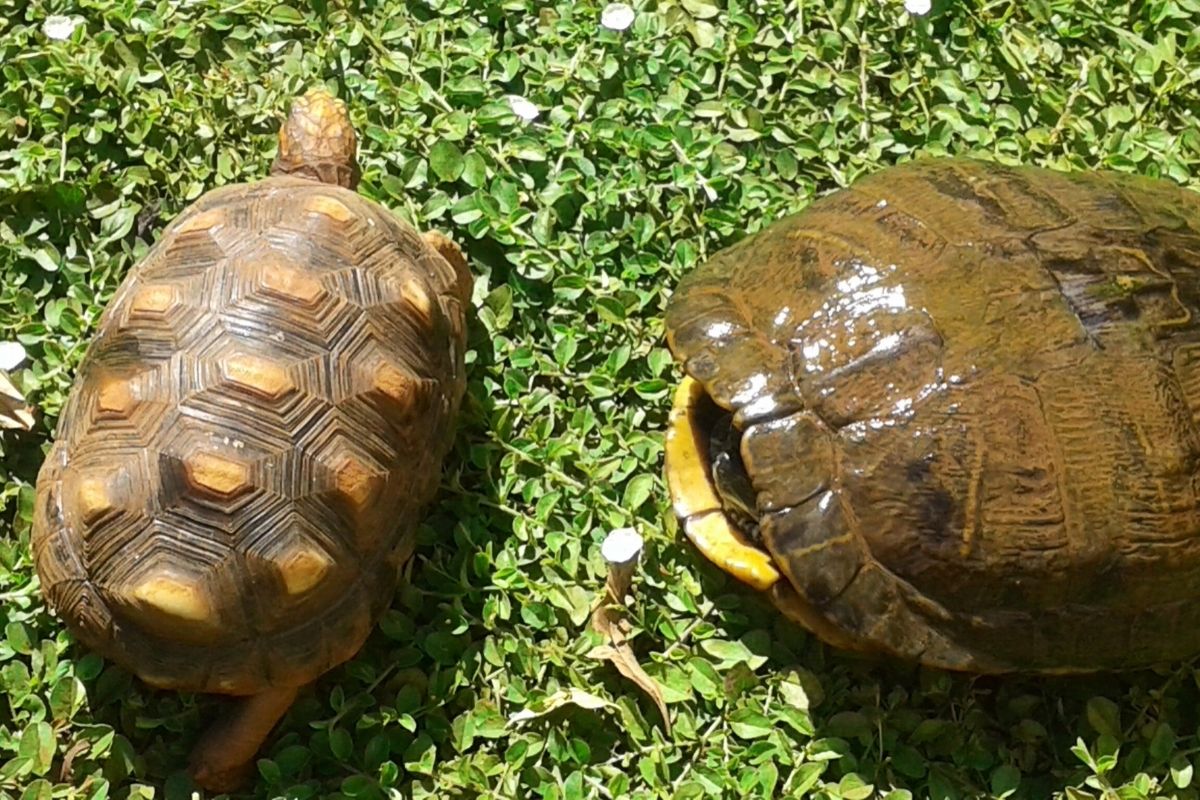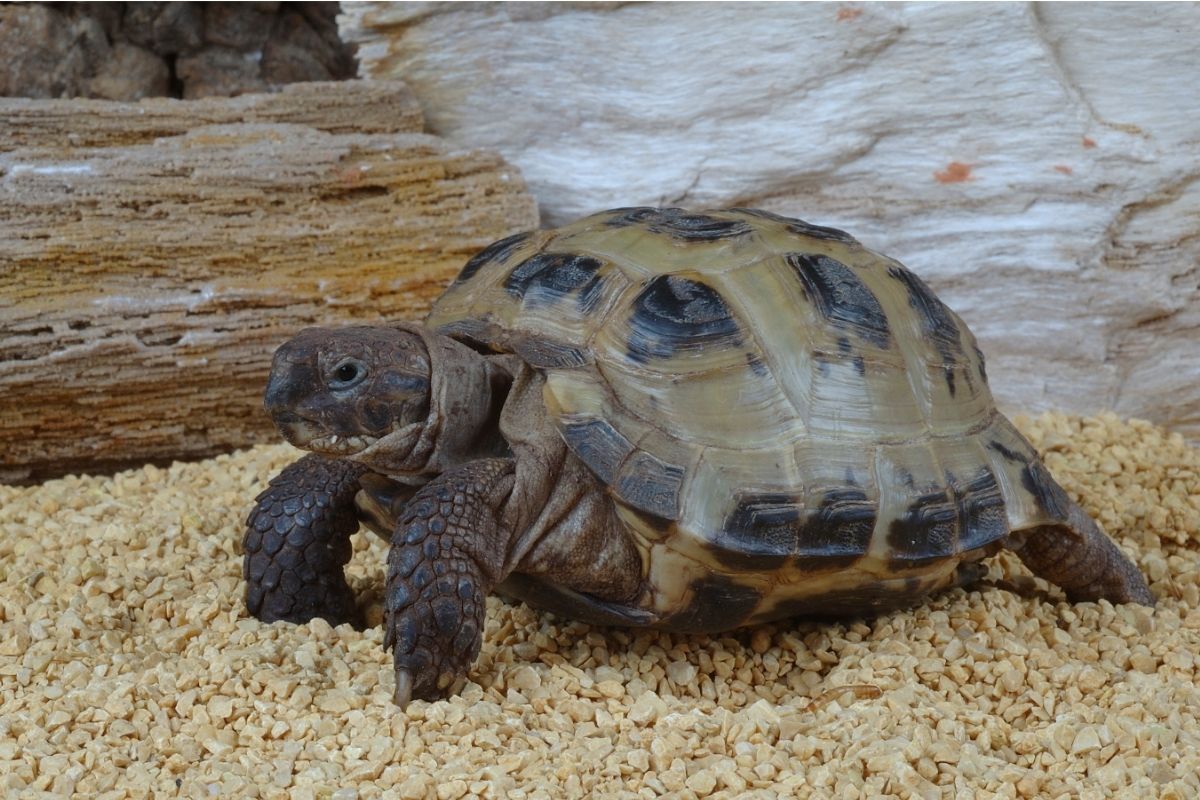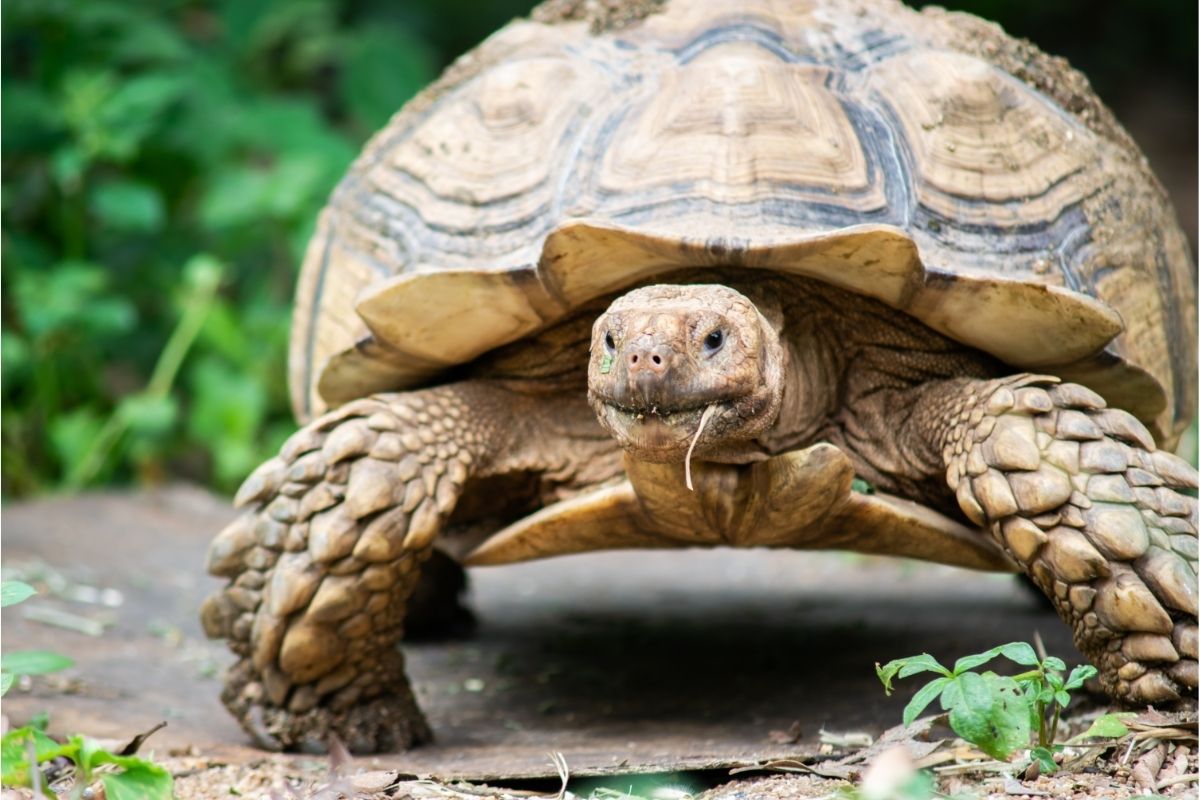Rumors of giant tortoises that have lived for centuries are surprisingly easy to believe.
Something about this patient and careful creature speaks of a wisdom that comes from centuries of experience. But what about the turtles and tortoises we like to keep as pets?
Giant tortoises can live for over 150 years, and even your pet turtle might live for several decades.
Take a look at this guide to find the secrets of the turtles’ longevity, and what you can do to ensure your pet thrives for as long as possible.

What Is The Lifespan Of A Turtle Or Tortoise?
The average lifespan of the turtle is thought to be between 10 and 80 years, with many turtle species expected to live for at least 30 years if cared for correctly.
But in some cases, tortoises can live up to 150 years. Some tortoises have lived for even longer than that! The most long-lived tortoises tend to be giant tortoises, such as the Galápagos tortoise.
Many of these are thought to have lived for over 100 years, although it’s difficult to know for sure because we haven’t been monitoring them for that long! Harriet, a Galápagos tortoise, was 175 years old when she died.
The rumored oldest tortoise ever to have been observed is Adwaita, an Aldabra giant tortoise that was said to have been given as a gift to Robert Clive of the British East India Company in the 18th Century.
Adwaita then made his way to Kolkata Zoo in 1875. When Adwaita died in 2006, he was said to be 255 years old, but this number is disputed.
Other long-lived tortoises include Tu’i Malila, a radiated tortoise from Madagascar who was said to be 189 at death.
Timothy, a Greek tortoise, lived to be 165 years old. And Jonathan, a Seychelles giant tortoise, might be the oldest terrestrial currently alive. He’s thought to be around 190 years old.
What about sea turtles? Myrtle, a sea turtle who lives at Cape Cod aquarium, is said to be around 90 years old. But it’s thought they might be able to live up to 150 years.
It’s hard to know the exact age of a sea turtle, because they spend most of their life in the water. We’ve only had the ability to properly track them for a few years.
Knowing the exact age of many turtles and tortoises is difficult because it will take several generations of humans to track the oldest members of the species.
Pet turtles and tortoises are unlikely to live quite as long as Jonathan and Tu’i Malila, but can still last for up to 50 years.
What’s The Secret Of The Tortoise’s Long Life?

Lots of humans are interested in cracking the secret to the tortoises’ long life. After all, this could teach us a lot about the aging process.
A Slower Metabolism
When we think of the tortoise, we tend to think of a steady, slow moving creature. This reputation isn’t unearned. And this slow movement goes all the way down to their metabolism!
A slow metabolism is thought to be one of the biggest factors of the tortoises and turtles’ longer life. Your metabolism is the process that converts the food you eat into energy.
A fast metabolism will convert food to energy quickly, while a slow metabolism takes a sedate approach.
With a slow metabolism, the tortoise can go for longer without needing to eat, drawing from the energy reserves. And cold-blooded, slow moving tortoises rarely use a lot of energy during the day.
But why, exactly, does this result in a longer lifespan?
There’s still some debate around that, but it’s thought that the chemical reactions used in converting food to energy can slowly damage the cells, and lead to aging. With a slower metabolism, there’s fewer chemical reactions, and less damage.
This slower metabolism also leads tortoises and turtles to be able to hibernate. During hibernation, an animal shuts down a large amount of its bodily functions and runs on reserves.
Animals with a high metabolism will burn through energy stores too fast during hibernation, even though they aren’t exactly busy.
To hibernate, animals need either a slow metabolism or the ability to slow the rate of metabolism. Being able to hibernate might add a few years to the lifespan.
A Slower Reproduction Rate
Eating and moving aren’t all the turtle does slowly. They also take a long time to breed. While many animals are ready to mate within a few years of being born, it can take a turtle more than 20 years to reach sexual maturity.
It’s thought that in the wild, a Galápagos tortoise might not be ready to breed until it’s 40 years old.
The reason for this is a low threat level to the giant tortoise. A big hard shell and relative isolation has left them to breed safely for millennia.
They aren’t in any rush to start reproducing. Other animals, which have high birth rates and reach sexual maturity at a young age, have to have plenty of offspring to assure the survival of the species.
Without having to rush to reproduction, the giant tortoise can spend more time enjoying being alive. And in doing so, saving precious bodily resources. The tortoise doesn’t have to grow up fast, which means it also doesn’t grow old fast.
Isolated Environment
You might have noticed that many of these long-lived wild turtles and tortoises come from fairly isolated places. The Galápagos, the Seychelles, Madagascar — all islands with low populations, and reduced risk.
It might be that tortoises and turtles live longer because they have had the opportunity to evolve this way, without a life of high stress avoiding death.
This wouldn’t be the sole cause – there are plenty of other animals on these islands with short lifespans – but it has given the tortoise the evolutionary advantages of a slower metabolism and steady reproduction rate.
Big Strong Shells
Size and strength come together with the tortoise and turtle, creating a creature that would be intimidating if they weren’t so slow and peaceful.
As a rule, bigger animal species tend to live for longer than smaller animals. This is thought to be linked partly to metabolism, and energy resources.
The size of the tortoise and turtle, combined with that strong shell, has also made them fairly resistant to predators. You’d have to be a very brave Galápagos hawk to take on a giant tortoise.
So, once the tortoise has reached full size, they’re pretty much safe from predators (apart from introduced predators, and humans).
A Healthy Social Structure
Something turtles and tortoises rarely, perhaps never, do is fight to be at the top. A long-lived turtle isn’t going to find itself usurped by some young up and comer that wants to be head of the pack.
Instead, solitary, mature turtles, can carry on living their lives much the way they always have, no matter what bright young thing comes about.
Complicated and caring, turtles and tortoises have interesting social bonds that allow the individual to thrive. This gives the animal a better chance of reaching adulthood, so it can reach its full potential.
We’re Still Learning About Tortoise And Turtle Lifespan

Scientists are still trying to crack the secrets of aging, and there’s a lot to learn. Although we can theorize about why exactly a tortoise can live for over one hundred years, we don’t know exactly how it happens — yet.
It’s widely thought that the slow metabolism plays a significant role, but exactly why it leads to a longer lifespan isn’t quite fully understood. The correlation between metabolism and aging is an area with plenty of ongoing research.
But it’s likely to be a combination of causes that allows the turtle and tortoise to live for so long. And there could even be factors that we’re not yet aware of! Location, DNA, and lifestyle probably all contribute to the impressive lifespan of the turtle.
As pet owners, the best thing we can do is to ensure our turtles live their lives to the fullest!
How Can I Help My Pet Turtle Or Tortoise Live Longer?
A well cared for turtle or tortoise can be a friend for life. It’s our duty as owner and turtle-keeper to provide them with an environment in which they can enjoy their impressive lifespan.
Although your pet tortoise is unlikely to live as long as a giant Galápagos tortoise, it can still survive for several decades.
Feed Them Well
If metabolism plays a key role in the extreme longevity of the tortoise, diet must be a factor. One of the best things that you can do as an owner is feed your turtle or tortoise an appropriate diet. That means lots of veggies, and food that their stomachs can agree with.
Most turtles and tortoises are either omnivores or herbivores. That means they eat either a mixture of plant matter and animal matter, or nothing but plants. A few species are carnivores, but these are typically sea turtles that you wouldn’t keep as pets.
When deciding on a diet, make sure it’s right for the turtle species! Not all turtles will enjoy being given nothing but lettuce to eat, and many tortoises will be unhappy if you try to feed them insects.
Research is your friend here! The right diet will not only improve the lifespan of your turtle or tortoise, but also their quality of life.
Fresh vegetables should form a large part of your tortoise’s diet. Fruit can be given on occasion, but too much can lead to obesity and related health problems. Turtles are slightly more complex, and will often require a mixture of veggies and meats.
There is one thing you have to avoid: dairy. Turtles don’t produce lactase, which means they can’t break down dairy products.
Keep Them Clean
Bacteria, parasites, and infections are all a danger to turtles and tortoises kept in an enclosure. Turtles can be messy eaters, and they also have a habit of going to the toilet all over the place.
In a tank or enclosure, this can quickly build up. While your turtle friend may not mind the mess, letting it sit can cause infections to grow.
A good clean of a tank or enclosure is necessary every two weeks or so. Spot cleans should be even more regular. Don’t let it get to the point where it starts to smell. You won’t like it, and your turtle certainly won’t be happy.
For tanks with water, make sure to keep an eye on the chemical levels. Too high or low a pH level can cause stress for a sensitive turtle and can even lead to sickness. A good filter is also necessary, to keep the water clean.
You can also bathe your turtle or tortoise, although how often will depend on the species. If you notice algae start to build up, or they’re shedding their shell, then a good bath might be necessary.
Sunshine And Fresh Air
Have you ever gone outside on a sunny day and felt your mood lift? It’s the same for turtles and tortoises, who need sunlight for a happy life. And it isn’t just acting as a mood booster. Exposure to UV light will make your turtle stronger and healthier.
For an indoor tank or enclosure, it’s important to invest in a basking light. This will provide your turtle with the UVB needed to produce vitamin D, which helps with the absorption of calcium. More calcium means stronger bones and a tougher shell.
If you have an outdoor enclosure, make sure it’s in a sunny spot for at least part of the day. Sunshine not only helps burn away any fungus and infections lurking in moist areas, but it’s also nice just to lounge around in.
Fresh air is also important, although we don’t recommend taking your semi-aquatic turtle for walks. Instead, if you have an indoor enclosure, make sure it’s in a space where the air is cycled through.
Don’t just shut your turtles in an enclosed room that only gets visited once a day.
Reduce Stress
If you’ve ever felt your heart pound after a sudden scare, then you’ll understand exactly why stress and longevity don’t mix. And as much as we love turtles and tortoises, they aren’t the best at dealing with a fright.
Outside factors that might set your turtle on edge, and cause them to feel anxious, could be harming your turtle’s lifespan.
Turtles and tortoises aren’t known for being particularly good at handling stress. They have a tendency to retreat into their shells and hide away from what’s bothering them.
A stressed turtle might stop eating, stop basking, and become sluggish and uninterested in swimming.
To reduce stress, make sure your turtle or tortoise is kept in an area where they don’t feel threatened. That means no exposure to loud animals and people.
Avoid excess handling, and make sure the water and temperature is kept steady. Add some areas to the tank where your turtle or tortoise can hide, which will help them lead a stress-free life.
Learn And Love
Turtles and tortoises are very different from both humans and other common pets. To care for them properly, we have to understand the unique needs of the turtle. Educate yourself about the proper care your pet turtle needs.
Turtles are diverse. That’s why the giant tortoise of the Galápagos and the leatherback sea turtles of Canada are all members of the turtle family.
Each species is different and requires a different form of care. Don’t just research generic turtle advice, because it might not be right for the turtle in your care.
Finally, you have to love your turtle! We don’t think this will be very difficult, but make sure you’re expressing that love in the right way.
A turtle won’t appreciate a big kiss on the lips, but they will notice a soothing voice and their favorite foods. Look out for signs of love from your tortoise as well! If you’re lucky enough to receive a nose boop, it means they like you a lot.
What Can Affect A Turtle Or Tortoise’s Lifespan?

There are several factors that can affect the lifespan of turtles and tortoises. As an owner, it’s important that you stay alert to dangers and aware of any issues with your pet.
Illness and disease can be an issue. Parasites and infections thrive in dark and damp conditions, which are rife in a turtle enclosure. Proper sanitation, regular cleaning, and a correct set-up can reduce the risk of illness.
Be sure to keep a close eye on your turtle for any signs of sickness, or any indication they aren’t feeling themselves.
Injury is another major issue. Injuries will not only lead to a decrease in quality of life, but even small injuries can be fatal if they lead to infection, or affect your turtle’s ability to move. Injuries are often caused by an improper enclosure set up, or poor handling.
Make sure that everything in a tank or enclosure is secure. Turtles and tortoises often love to climb, and it’s your job to ensure they can do so safely. Avoid handling your turtle or tortoise as much as possible. They don’t enjoy it, and it can lead to injury.
Diet can also shorten a turtle or tortoises lifespan significantly. Make sure you’re feeding them both the right food, and the right amount. Monitor how much they’re eating, so you know they’re getting enough. Malnutrition can be fatal.
When Your Turtle Or Tortoise Outlives You
The exceptional longevity of turtles and tortoises means they can often outlive their owners. It’s not a factor many of us really want to think about, but it is something a responsible owner has to consider.
Turtles and tortoises really can be lifetime commitments, and you have to think about what will happen to your pet when you’re gone.
Speak to friends and family, and see who might consider caring for your turtle. Give them a chance to get to know your tortoise friend as well! Otherwise, research organizations who will agree to care for, and hopefully rehome, your beloved pet.
Final Thoughts
The lifespan of the tortoise is an incredible thing, and an opportunity for careful owners to have a friend for life! Make sure to do your part, and care for your turtle or tortoise correctly, so they can live as long, and comfortably, as possible.
